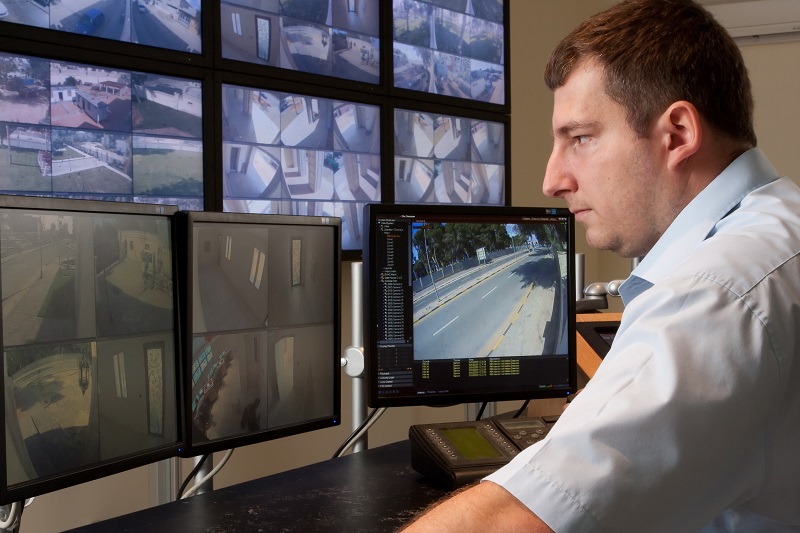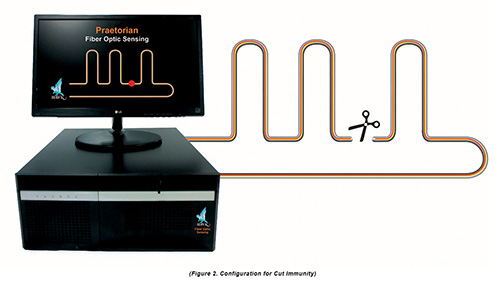Secure Your Home With Dependable Fiber Optic Protection Solutions
In an era where safety and security risks are progressively advanced, the need for effective protection solutions is paramount. Fiber optic security systems stand out by offering exceptional integrity and efficiency, leveraging innovative light transmission modern technology to improve monitoring abilities. security fibers. Understanding the intricacies of fiber optic security can illuminate the course to securing your building a lot more successfully.
Advantages of Fiber Optic Security
Fiber optic protection options provide a variety of benefits that make them progressively important in today's digital landscape. One of the most substantial benefits is their superior data transfer capability, which allows for the transmission of huge amounts of information over fars away without considerable signal degradation. This ability is particularly useful for safety and security systems that rely on high-def video clip monitoring and real-time monitoring.
Furthermore, fiber optic cables are naturally more safe and secure than conventional copper electrical wiring. They are immune to electro-magnetic interference, making them less at risk to hacking or eavesdropping. This improved protection is important for protecting sensitive information and maintaining the stability of security systems.
In addition, optical fiber are much more resilient and resistant to ecological aspects, such as dampness and temperature level fluctuations, making sure long-lasting integrity and lowered maintenance expenses. The lightweight nature of fiber optic cables also streamlines setup processes, enabling better adaptability in system style.
Just How Fiber Optic Equipment Work
In contemporary security applications, the operation of fiber optic systems depends on the concepts of light transmission via flexible glass or plastic fibers. These fibers are designed to lug light signals over fars away with minimal loss, making them perfect for transmitting data connected to protection surveillance. The core of the fiber, bordered by a cladding material, ensures that light signals continue to be consisted of within the core with a phenomenon referred to as overall interior reflection.
When incorporated into security systems, fiber optic cables can send data from various sensing units, such as video cameras, motion detectors, and alarm systems, to a central surveillance terminal. The high bandwidth ability of fiber optics permits the transmission of large quantities of information at the same time, enabling real-time monitoring and prompt feedback to prospective hazards.

Kinds Of Fiber Optic Security Solutions
Different sorts of fiber optic safety solutions have actually emerged to enhance security and protection throughout different atmospheres. One prominent option is fiber optic perimeter invasion discovery systems (PIDS), developed to check and protect building limits via the detection of resonances and disruptions along fiber optic cable televisions. These systems supply real-time alerts, allowing punctual responses to unauthorized accessibility attempts.
One more efficient service is fiber optic video clip security. This technology leverages high-definition electronic cameras connected through fiber optic cords to send video data over long ranges without substantial loss of top quality. This configuration is especially valuable in expansive areas, discover this info here such as flight terminals and commercial websites, where typical copper cables may falter.
Additionally, fiber optic sensors are progressively used for ecological surveillance, detecting changes in temperature, pressure, or acoustic signals that could indicate safety and security breaches or dangerous conditions. These sensors provide high sensitivity and accuracy, making them perfect for vital infrastructure protection.

Setup and Maintenance Tips
Effective setup and upkeep of fiber optic safety and security options are essential for guaranteeing their ideal performance and longevity. Fiber optic cables should be transmitted securely, staying clear of sharp bends or spins that can jeopardize their integrity.
During installation, it is suggested to conduct extensive screening of the system to confirm that all parts are working properly. Normal upkeep checks must be scheduled to check the fiber optic cable televisions for any type of indicators of wear or damages, in addition to to ensure that links continue to be protected. Cleaning up the ports regularly is additionally vital to stop signal loss because of dust or debris.
In addition, keeping an upgraded supply of installed components and their specs can promote less complicated troubleshooting and upgrades. By sticking to these setup and maintenance pointers, homeowner can take full advantage of the effectiveness of their fiber optic safety solutions, guaranteeing a trusted protection versus potential dangers.
Comparing Prices and Performance
When evaluating fiber optic safety and security services, recognizing the balance in between prices and performance comes to be paramount (security fibers). Organizations should think about the in advance investment, continuous maintenance costs, and the long-lasting value these systems offer. While fiber optic systems may call for a higher initial installation cost compared to traditional copper wiring, their resilience and decreased susceptibility to electromagnetic disturbance often convert to reduced upkeep expenses in time
Efficiency is one more vital element; fiber optic safety and security systems offer boosted information transmission speeds and improved reliability. They can cover bigger distances without signal degradation, making them ideal for large properties or remote areas. The high data transfer capability supports innovative safety and security applications, such as high-def video surveillance and real-time tracking, which are essential for thorough safety and security monitoring.
Eventually, the choice between price and efficiency need to be directed by specific safety demands and run the risk of analyses. Organizations should assess their unique needs, considering aspects like home dimension, security dangers, and technical developments. By performing a comprehensive cost-benefit evaluation, stakeholders can make enlightened decisions that line up with their safety purposes while guaranteeing an audio security fibers investment in fiber optic modern technology.
Conclusion
Finally, fiber optic protection solutions provide considerable benefits in regards to efficiency, reliability, and immunity to environmental interferences. These systems improve security capacities and border security, making them an effective choice for extensive security. Although first installment prices might be greater, the lasting advantages, consisting of lowered upkeep and premium functionality, justify the financial investment. Inevitably, the fostering of fiber optic innovation represents a forward-thinking method to safeguarding residential or commercial her response properties against advancing protection threats.